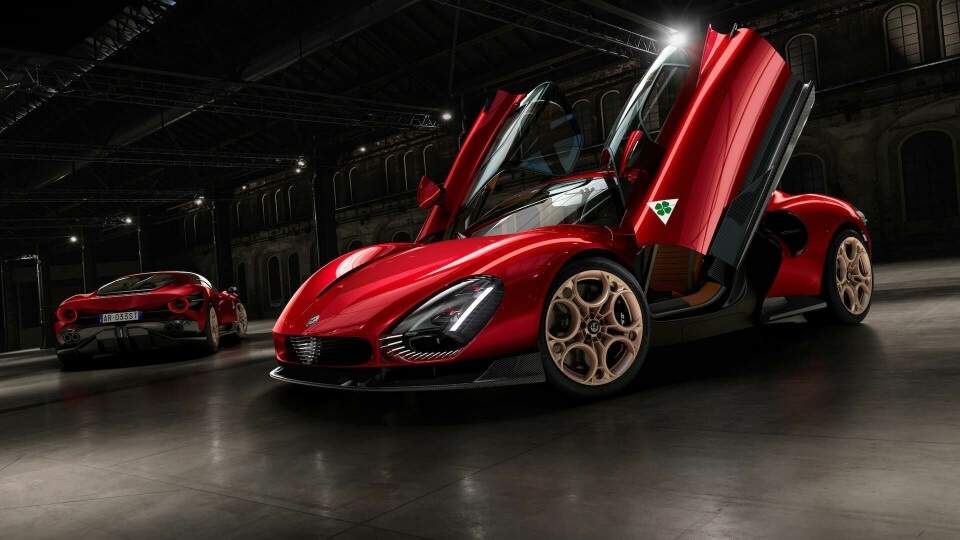
Alfa Romeo revives 33 Stradale supercar
Alfa Romeo has reimagined the 1967 33 Stradale supercar in a mission to create a new milestone in the brand’s history
If the casual car enthusiast were to be honest, Alfa Romeo design had lost its way a little bit, with the portfolio headlined by high-riding SUVs and crossovers. These are useful money makers, but will hardly stand as markers in the history books. Revealed on 30 August, the all-new 33 Stradale certainly puts things back on track.
Feeling more like a spoken word performance than a traditional product launch, the digital unveil began with a detailed history of Alfa Romeo’s motorsport roots. This would prove useful background information on the original 33 Stradale, a light, low-slung sportscar powered by a remarkable 2.0 V8 engine, which directly influences this new car by more than just its name.
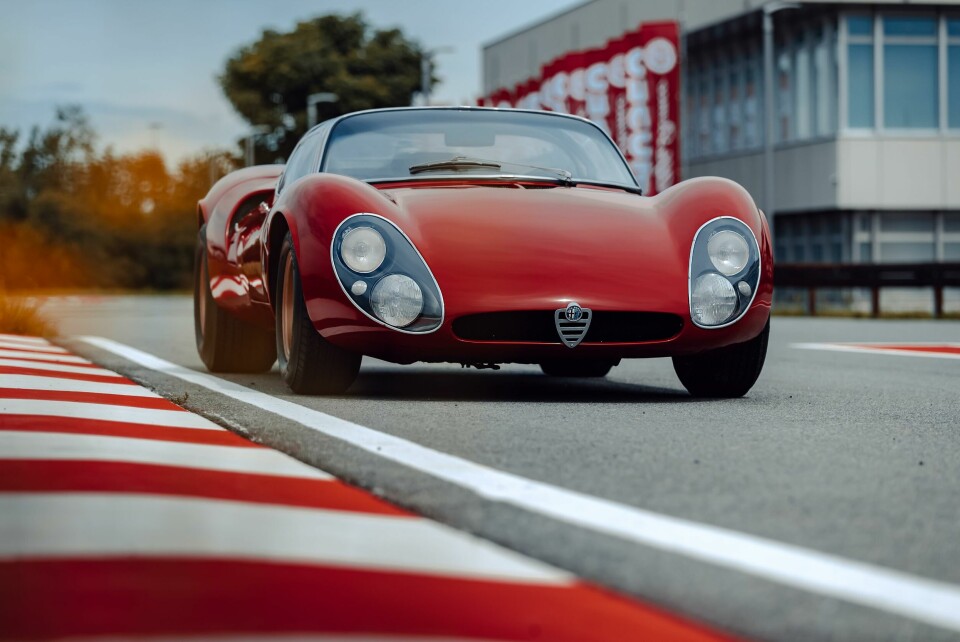
Indeed, the inspiration is clear in all facets of the new design, from its sleek exterior and new light signatures to the low-fuss driver-centric cockpit – and even a small-yet-powerful V6 engine. (Although in the era of downsizing, we would not have been surprised to see a 2.0-litre). A battery electric version will also be available, with Alfa heeding CDN’s calls for renewed efforts on the sound design front and creating a unique synthetic V6 warble.
This vehicle is clearly a feat of engineering, but the exterior design is the showstopper here. It is objectively beautiful and captivating in a way that only fast Italian sports cars seem to manage. Gentle curves created by a classic ‘three line’ design are balanced by what Alfa Romeo calls “brutal” details, particularly at the rear where the rear mask and taillights combine to create a menacing bird of prey scowl (check the last image in the gallery above).
From rear three-quarter view, those lights extend like turrets from the rear fender, while the carbon diffuser houses (if not obscures) the presence of four tailpipes, two at each corner, to match the original Stradale. In an age of ever-larger grilles, take solace in the petite V-shaped front shield created by delicate metallic ribs.
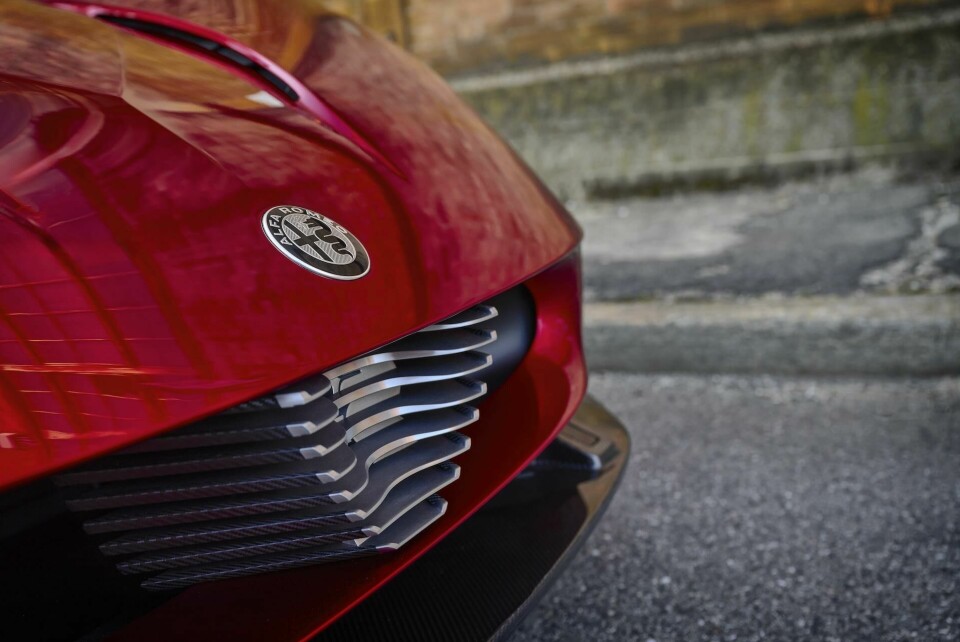
Design was led by Alessandro Mesonero-Romanos, who highlighted that this is a car for the enthusiast. “We had to do this for the Alfisti around the world,” he said. “And as someone who was drawing Italian cars from around 12 years old, it is a dream come true.”
The relatively small team of designers, he explains, drew heavily on the original lines, surfacing and detail of the original Stradale. He personally placed an emphasis on simplicity – something fellow sportscar designer Klaus Busse recently spoke to us about. “You can say a lot with a few lines,” said Mesonero-Romanos on stage, highlighting the subtle creases on the front and rear fenders. “It is about beauty with a purpose – because beauty and function go hand in hand.”
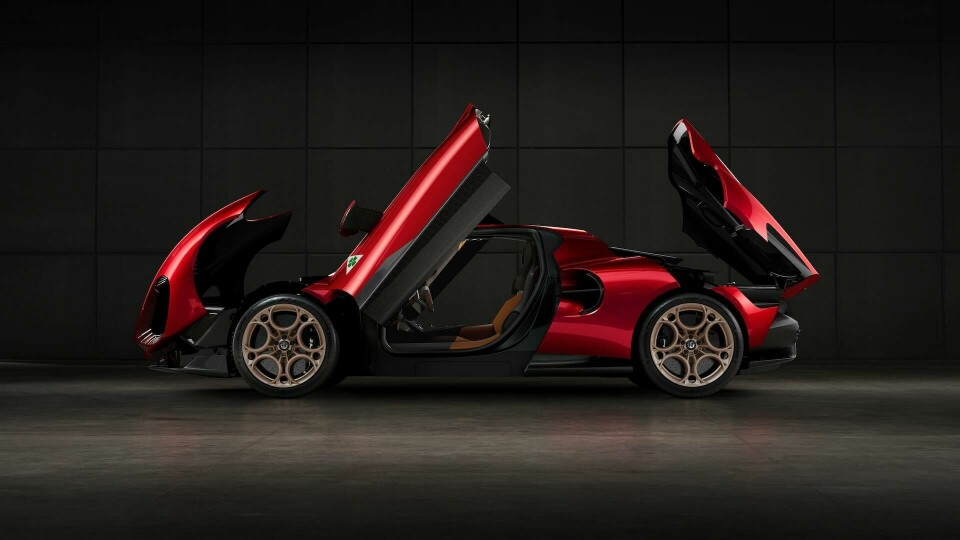
His favourite element of the design can only be seen when the vehicle is stationary, the cofango, which raises the front and rear openings for easy access to make repairs or tune ups . “You see the car’s raw structure and power unit when it is uncovered,” he explains.
In combination with the elytra doors that eat into the roof, it certainly adds an element of theatre and what he describes as “true Alfa spirit.” Also dinstinctively Alfa are the headlights, which dominate but do not overpower the front end; these are intricate pieces of work that the team describes as “refined objects of design.”
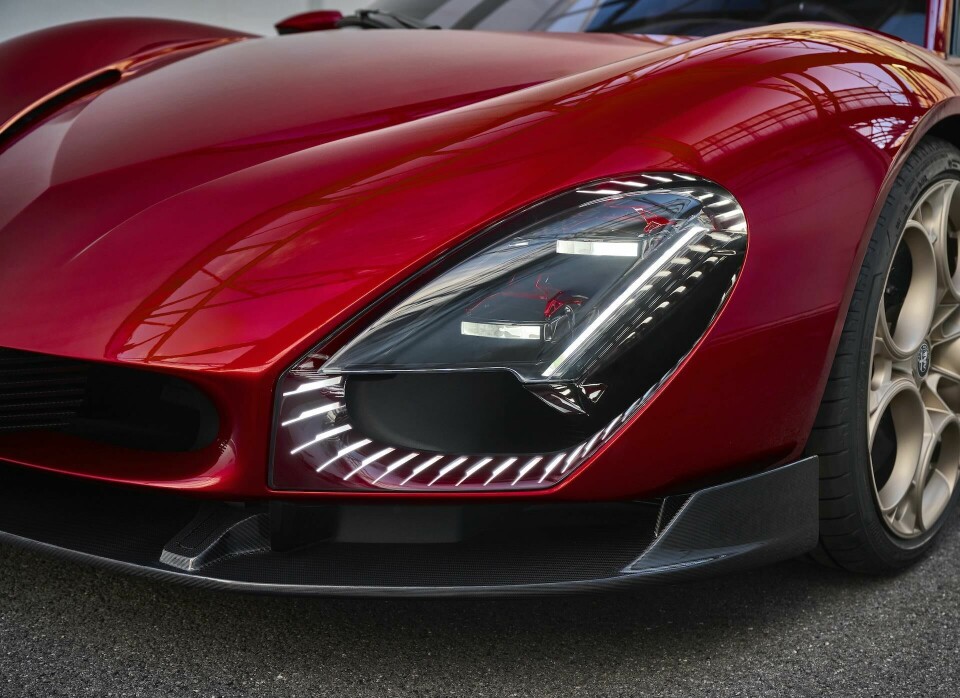
Underneath the outer shell, it all gets more technical. The car sits on an aluminium ‘H frame’ with a carbonfibre monocoque construction. Within that sits a finely-tuned 3.0-litre twin-turbo V6 good for 620hp (750 for the BEV version). Suspension can be stiffened and active exhaust valves opened when in Pista (track) mode, and the overall driving experience shifts towards setting lap records. But for such a performance-oriented car borne from motorsport, the 33 Stradale avoids any whiff of ostentation. That’s the power of simple design for you.
The interior itself is also clearly geared toward spirited driving and is as barebones as it gets in today’s era of hyperscreens and ambient lighting. What is there, is done well, with carefully machined switchgear (not only in the centre console but also aviation style in the spine of the roof) and knurled gear and parking selectors. As ever, there are some lovely details elsewhere, such as the Italian flag created by a metal grille behind the monolith centre console, which itself is stamped with the vehicle’s unique identification number.
Various members of Alfa Romeo management made reference to the fact that retro design was not the aim of the game here. CEO Jean-Philippe Imparato spoke of being “evocative, but not nostalgic.” However, it is difficult to make that argument against ‘heritage mining’ when the new car carries the same name as the one that came half a century before it, and leverages obvious design cues like the bronze wheels and iconic four-leaf clover below the wing mirror.
It should be said that, in this writer’s experience, retro design is usually only frowned upon by designers yet broadly welcomed by those outside of the trade. Mesonero-Romanos seems to understand the balancing act, noting that the aim was to “respect our history [while] bringing the 33 Stradale into modernity.”
Most importantly, this is a car that puts Alfa Romeo back on the map and – we hope – recements its rightful place in a market from which it has been slowly falling away. Strong words from the CEO certainly give us hope. “We want to leave a mark, a milestone… We want this to be the most beautiful and innovative car from Alfa Romeo.”





























